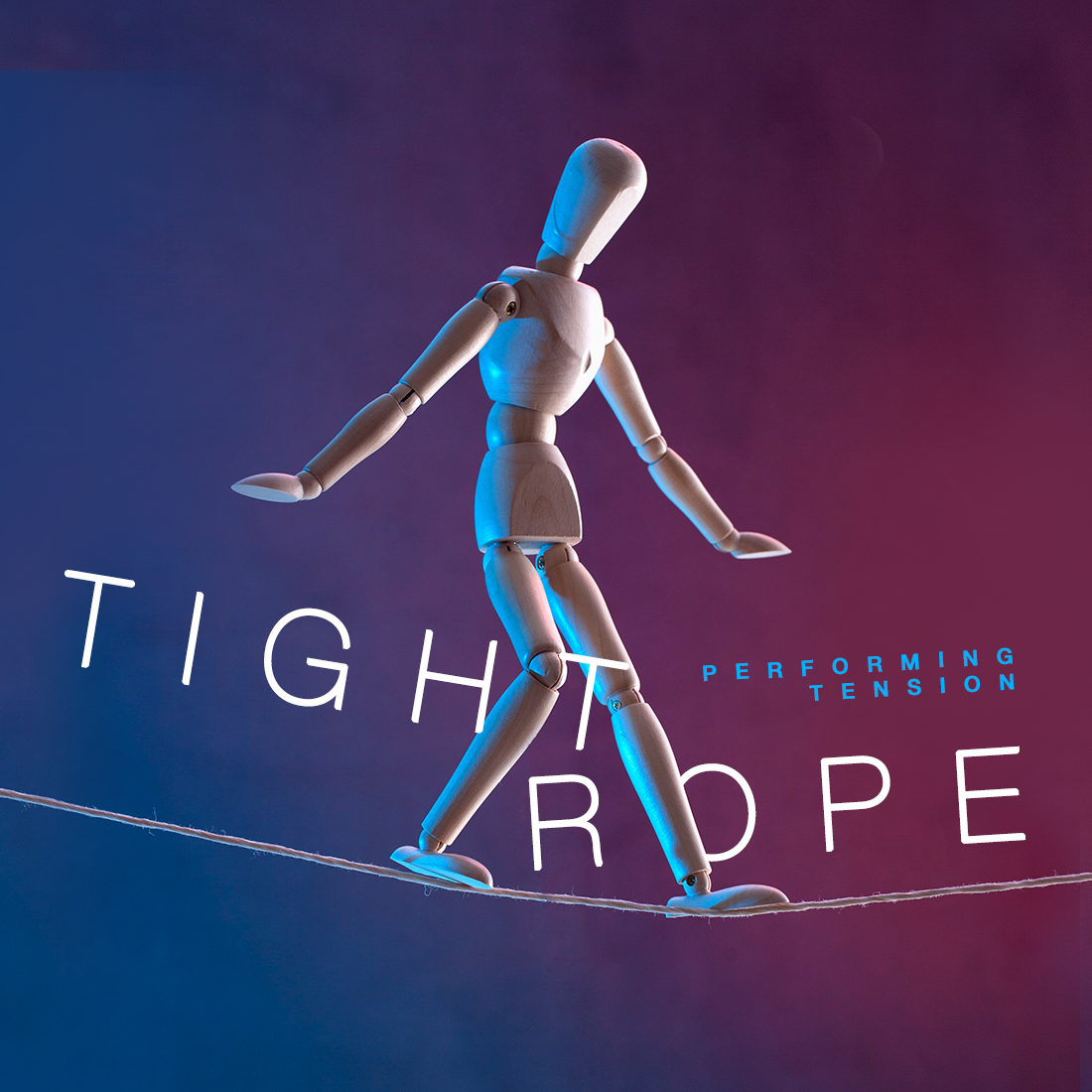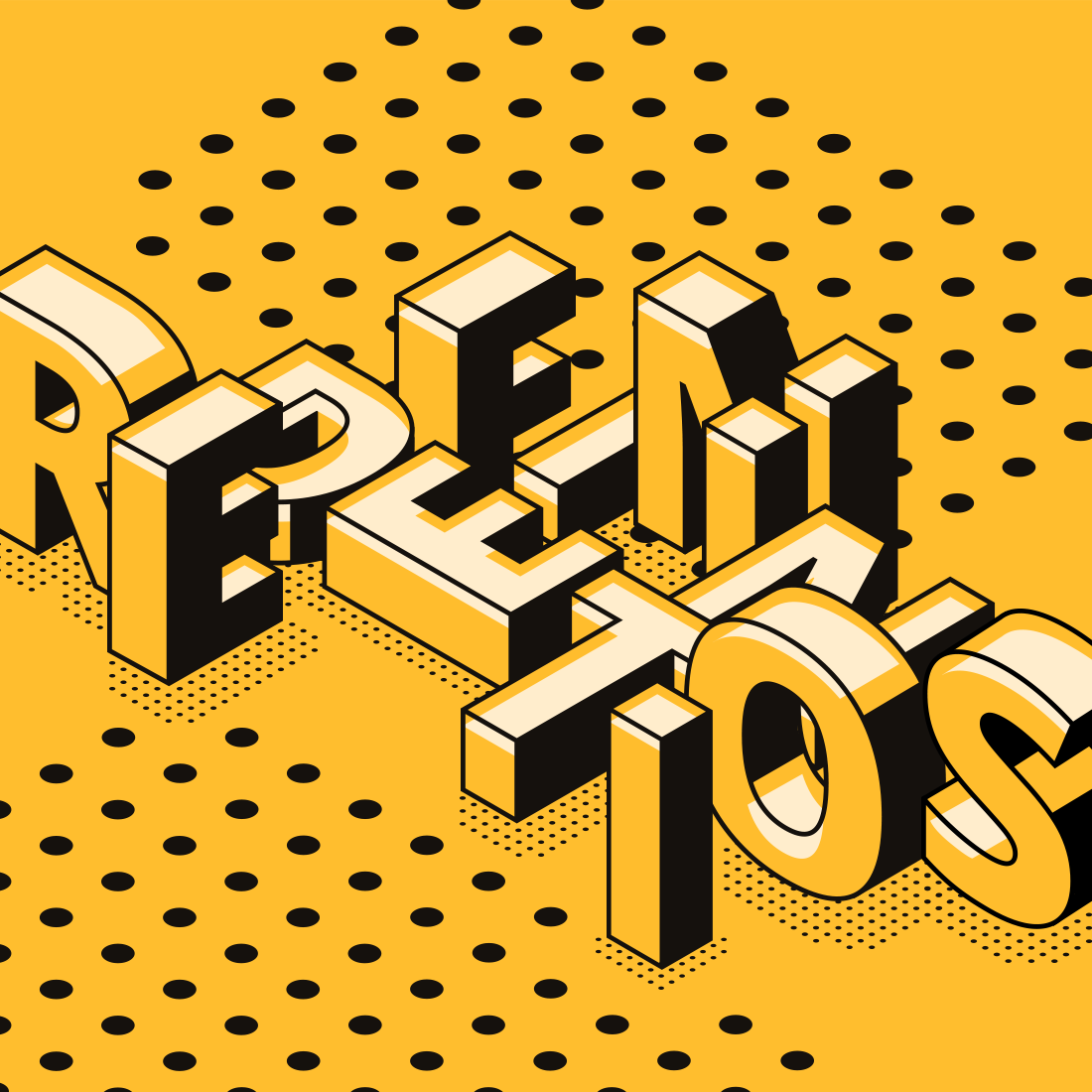CAITLIN OUANO
An Exploration of Gender Identity and Binaries in Avatar: The Last Airbender
Editor’s Note: Spoilers to Avatar: The Last Airbender ahead.When Avatar: The Last Airbender, after what felt like one hundred years had passed, made its debut from the iceberg on Netflix, the show enjoyed what The New Yorker called a “stunning second life.” Kids and teenagers (and even many adults) who watched the show in 2003 got to re-binge the epic series, and new audience members of all ages got to see what all the hype was about.
The Avatar Cycle was reincarnated anew.
Avatar The Last Airbender: Book 1 | Epic Trailer | Source: Platypus Bear/YouTube
Funnily enough, the action-packed Avatar doesn’t begin with a thrilling martial arts sequence, but rather with a sibling rivalry on a boat. The brother, Sokka, is fishing unsuccessfully. His sister, Katara, displays the ability to actually bend the water into a bubble and take a fish right out. Sokka’s ignorance of Katara’s skillful catch leads him to accidentally “pop” the bubble.
Instead of apologizing, he tells her to keep her “weird powers” to herself.
Katara furiously calls him a sexist (yes, in the 2005 pilot episode of a Nickelodeon kids’ show), states she is tired of taking care of everything since the death of their mother, and rips an iceberg open with the waterbending skills he just insulted. This scene sets the tone for the whole series: gender binary attitudes and disregard for others’ unique skills is idiocy. There’s no need to validate the merits of a sexist, male, teenage argument.
First 5 Minutes of Avatar: The Last Airbender! | Avatar | Source: © Avatar: The Last Airbender/YouTube
In many ways, the 2003 kids’ show was far ahead of its time. Writers Bryan Konietzko and Michael Dante Dimartino employed a cultural consultant to ensure all Asian culture they were drawing from was incorporated with sensitivity, cast several Asian voice actors like Mako, Dante Basco, and Jennie Kwan, in lead roles, and notably featured an ensemble of diverse female characters. And the major antagonist was a teenage girl: Fire Nation Princess Azula.
Avatar sets itself apart from other children’s shows of the time by continually emphasizing the personal growth of its characters, an ensemble of complex individuals who struggle in an increasingly morally ambiguous world. It deconstructs the typical heroes’ journey of good versus evil. Each season unravels a new dimension to the Fire Nation’s imperial war, and gives a new depth to our beloved characters caught in between. Avatar posits that finding balance within oneself is just as important as creating balance in the world. The story does not promote victory or achievement, the way Star Wars or the Marvel Cinematic Universe often does. Rather, it promotes inner peace and balance. Yin and yang. Right and wrong. Fire and Water. Earth and Air. Male and Female.
In Avatar, the personal journey is just as important as defeating the larger enemy.
Each character has their own unique balance of femininity and masculinity unrelated to their cis-identity. But by closely examining the dichotomy of Azula and Katara, our two bending-prodigy protagonists, we can examine the Yin-Yang forces of gender the show was seeking to define and understand. They are not contrasting opposites, and the writers don’t craft their polar traits into a rivalry: in fact the two young women have the most minimal interchanges of all the characters! But a close examination of their respective character development and their relationship with their feminine traits reveals much about the show’s attitude about gender binaries: they are an imbalance.
Azula: Toxic Masculinity and Rejection of Femininity
Who knew that in 2005 the antagonistic embodiment of toxic masculinity would be a female prodigy princess?
Azula’s 21 Most SAVAGE Moments in ATLA⚡️| Avatar | Source: © Avatar: The Last Airbender/YouTube
Though Firelord Ozai was the primary antagonist, his daughter Azula was always the more active villain, and a favorite of writers and fans. A master of wartime strategy and a badass firebender, Azula seemed continuously unbeatable throughout the entirety of the show, always two steps ahead of Team Avatar, leaving many (at least eleven-year-old me) in disbelief. Who the heck could beat this unstoppable girl?
Azula’s character arc shows her first taking down the entire Earth Kingdom by corrupting the government from within, foiling an invasion during an eclipse, and then slowly deteriorating psychologically after her friends betray her to help her brother Zuko. Azula’s descent reveals how her adoption of the toxic masculine mindsets of fear, control, domination, and even class superiority are a form of personal imbalance that lead to her undoing.
Masculinity is not inherently toxic or bad, and women can exhibit masculine qualities without becoming evil. The wonderful thing about Avatar is that all of the characters portray a mix of both gender’s traits. Toph, Aang’s earthbending teacher, is stout, short-haired, loud, dirty, and arguably the show’s most masculine character despite being a young girl. Azula and Zuko’s uncle Iroh, easily the wisest and strongest character who becomes the moral center of the show, continually teaches Zuko chivalrous values of respect, honor, and decisiveness but also pushes him to listen, reflect, and be kind to others. Gyatso, Aang’s guardian, and Guru Pathik, his mentor, are protective, wise, caregiving, and playful male mentor figures. The show does not reject masculinity, and Azula is (significantly) never treated as “less than a girl” for displaying masculine qualities. In fact, Azula is shown to enjoy being pampered and getting her hair done (so does the masculine Toph), and in the episode “The Beach,” displays a desire to flirt and socialize. She even admits to her friend Ty Lee she is jealous about the romantic attention Ty Lee gets.
The Magic of “The Beach” – Avatar: The Last Airbender | Source: © captainmidnight/YouTube
However, it is Azula’s embracing of violent masculinity and intense loss of feminine connection and motherly influence, her imbalance, that prove to be her undoing. Ozai’s extreme masculinity and violent imperialism, the inability of the Fire Nation to conceive that power can be shared in harmony, is the truly villainous force. Azula’s embracing of that philosophy is her downfall.
It is apparent from the first time we meet Azula that she is controlling and manipulative, attacking her own brother and screaming at her uncle to be quiet. But she proves herself admirably tactical by recruiting her friends Mai and Ty Lee and seeking the counsel of her firebending teachers Lo and Li. She has a giant party of female strength helping her to victory. But she rules them through fear and domination and her status as a princess. When Ty Lee says she prefers to stay in the circus, Azula puts her life in danger to pressure her into joining.
Azula is the Fire Lord’s chief executor, but it is gradually revealed that she has a troubled relationship with her mother Ursa. In “The Beach,” Azula reveals that “my own mother thought I was a monster” before not-so-convincingly brushing off its significance. It is never revealed what Ursa truly thought of Azula, but Ursa’s preference for Zuko and lamentation that there was something “wrong” with Azula shows that Azula likely lacked a compassionate female caregiver, or at the very least felt rejected or misunderstood by her in some way.
Who knew that in 2005 the antagonistic embodiment of toxic masculinity would be a female prodigy princess?
Azula has a killer instinct and a drive to succeed from a young age that allows her to thrive under the rule of her father, but one that leaves her in an extreme imbalance. During Azula’s psychotic episode in the finale, she doesn’t think about Ozai. She sees her mother Ursa in the mirror telling Azula she loves her. Azula refuses to acknowledge such unconditional love, displaying distrust in her mother and her ability to be loved, something that was likely at the core of identity and only now reeling its ugly head. She screams, “Trust is for fools!”
Azula: You think i’m a monster. | Source: Avatar Reymoth/YouTube
Azula’s descent into madness explores the three-dimensional, psychological dark side of a Mary Sue character, the horrifying results of a young girl who achieves for the appreciation of men. In “Zuko Alone,” a young Azula is toted out to answer history questions and perform martial arts for her grandfather so that her father, Ozai, can impress him. Azula fights for her father’s “love” and is rewarded with a throne: an empty lonely consolation for his abandonment of her.
It is Azula’s female community of Ty Lee, Mai, Lo, and Li, not her power plays or her firebending skills, that actually helped her succeed. She fundamentally understands that relationships are important (she herself recruited Mai and Ty Lee), but tries to ignore this significance to be more like her father, which is what leads to her psychological undoing. Ultimately, she is unable to detach from the significant supportive role that Mai and Ty Lee played in her identity; their support helped her topple a kingdom, but their betrayal leaves her defenseless and easily defeated.
Though the Aang-Ozai fight is the ultimate showdown, it can be argued that Azula was always the true, compelling villain. Zuko was a sympathetic antagonist. Ozai was too distant from the show’s main action and lacked complexity. The greatest hero in Avatar is a young boy, Aang. But the greatest villain is the teenage girl Azula.
Katara: A New Model of the Feminine Hero (take notes, Hollywood)
The first person to speak in the show is Katara.
Anyone familiar with the show knows the epic feeling you get when you hear Katara say “Water, Earth, Fire, Air” in the opening sequence. She is the show’s first character and the very first protagonist. Though Aang is the subject of the story, it is always Katara’s perspective, and it is Aang’s relationship with the compassionate and determined Katara, who helps him whenever he’s down and who leads the fractured Team Avatar through the desert, that propels the show forward.
Katara offers us a model to reinvent feminine characters by emphasizing the significance of caregiving, and the presence of balanced feminine and masculine traits. Katara does not define herself in relation to masculinity, and the writers never entertain the idea that her maternal nature erodes her martial arts skills or her individualism. In Avatar, young women don’t choose between their relationships and their aspirations, and they are incredibly complex in their emotional range. Katara is jealous and angry just as much as she is kind and forgiving.
Top 10 Badass Katara Moments on Avatar: The Last Airbender | Source: © MsMojo/YouTube
The best thing the show did for Katara was that it never diminished her feminine character traits, and thus they never fell to the binary thinking that feminine, maternal individuals are subordinate. It always fully embraced the significance of the role she played, and in many episodes she operates as the leader of the group. Just as third wave feminism argued that the entire idea of separation and subordination was the truly harmful force, the show’s writers never separate Katara’s maternal, caregiving nature from her fiery drive to succeed. In “The Painted Lady,” when Sokka suggests leaving a poor village Katara has been healing to fend for itself, Katara angrily declares that she will “never turn her back on people who need her.” She affirms her singular individualistic effort as one of maintaining communal strength and helping the innocent.
In Season 2, Katara, now a master waterbender, plays an incredibly integral role in keeping the fractured group united. In “The Desert” Katara displays an immense level of compassion for the furious Aang, who loses his pet Appa and angrily takes it out on his friends. Katara is the only one who does not run from Aang when he flies into a powerful Avatar State tantrum. She tearfully, boldly, and without fear, hugs the terrifying Avatar and allows him to feel his sadness, until he breaks down in tears. In the following episode, “The Serpent’s Pass,” Katara helps deliver a baby and encourages Aang to see the new life brought into the world. The sight of the baby Katara delivered helps Aang regain his optimistic view, and he tearfully tells Katara that her friendship and unwillingness to give up on him is the reason he feels hope again. Familial, caregiving actions are just as inspiring as acts of physical achievement.
THE BEST EPISODE YET. KATARA IS MVP | “The Desert” Reaction – Avatar the Last Airbender Book 2 (#6) | Source: © ShredderFTW/YouTube
In the Avatar world, the values of community and shared strength eternally trump the madness of extreme individualism. The show’s writers often side with Katara’s maternal identity, as she is often shown to be just and right. The episode “The Runaway” most exemplifies the show’s preference for Katara’s maternal values, as Sokka and Toph openly discuss the merits of Katara’s maternal qualities and how they embody her responsibility and strength. In the aftermath of the death of their mother, Sokka says of Katara, “she stepped up and took on so much responsibility. She helped fill the void that was left by our mom.” Toph, who often mocks Katara for her mothering tendencies, finally voices her gratitude:
“The truth is, sometimes Katara does act motherly, but that’s not always a bad thing. She’s compassionate and kind, and she actually cares about me. You know, the real me.”
Fan favorite Toph’s more rebellious, fun-loving qualities clash with Katara’s propensity to “mother” the group and tell them to behave. Toph wants to continue stealing from townspeople with Aang and Sokka, but Katara keeps telling them to stop doing so. Rather than dismiss Katara as nagging and Toph as fun, the show uses the rivalry to develop the relationship between the two young women and show that Toph isn’t having fun: she is acting out her hurt feelings toward her parents by misbehaving.
Rather than extol the tomboy nature of Toph and dismiss the girliness of Katara’s motherly inclinations, the show writers use the episode to favor the humbling, supportive qualities of Katara over Toph’s more boyish mischievous qualities, showing them for the defensive front they are. The episode doesn’t conclude with Katara agreeing to be more “fun,” loose, and boyish (that happens a beat earlier). Rather, it concludes with the blind Toph humbly asking Katara for help writing a letter to her family. Though viewers love how Toph invented metalbending and declared “I am the greatest earthbender in the world,” that phenomenal act of physical achievement was ultimately a response to the fact that her parents, her only family, sent two men to imprison her in a metal cage. Katara sees through the exterior. Toph’s immature emotional repression is no match for Katara’s compassion.
Toph Being an Earthbending Savage for 11 Minutes! ⛰ | Avatar | Source: © Avatar: The Last Airbender/YouTube
In fact the show is constantly exploring how characters put up defenses rather than allow their softer, more sensitive vulnerabilities to surface, earning it continual acclaim. While Katara is maternal and often the peacekeeper in the group, she is also an angry, flawed character, and holds stone-cold grudges against her father, Zuko, and Jet. Even the younger, more stubborn, hard-headed Toph points out in season 3 that Aang, Katara, and Sokka’s prejudice against Zuko is preventing them from seeing that he is Aang’s best bet to learn firebending. Interestingly, Team Avatar has a way of balancing itself out and avoiding extremities. Whenever one member displays anger or snap judgements, the rest of the team operates as a thermostat, objectively taking a breath and sorting out the conflict for the member in anger. It is a model for shared, collective power. There is no leader who is absolute in his judgement, and even Aang, the Avatar and peaceful Airbender, relies on his friends for wisdom. Dialogue in Katara’s Team Avatar is open and objective.
Water Beats Fire
Against Team Avatar is Team Azula.
Azula, at the show’s start, is an angry prodigy who rules her ship through fear. Azula’s team is a dynamic of pressure, fear, and achievement. It’s clear that her friends admire her but can’t exactly say no to her. Azula also enjoys class divisions and binary thinking, unlike Team Avatar. She claims she has the “Divine Right” to rule. Azula beats the corrupt Earth Kingdom minister Long Feng not by defeating him in battle, but by incisively convincing him that because he is a social climber, he is fundamentally inferior.
Though Azula, the show’s true compelling villain, is set up to fight her brother Zuko, it was never his destiny to defeat her. It was Katara’s. Katara may not be the Avatar, but she truly is the ideological heart of the show. And her victory over Azula is part of the ideological victory of the show.
Zuko + Katara vs. Azula 🔥FULL Agni Kai | Avatar | Source: © Avatar: The Last Airbender/YouTube
The final Agni Kai exemplifies the way a balanced world works. You cannot beat fire with fire, and you can’t fight extremity with extremity. The only thing that can beat fire is water. Azula and Katara have little interaction but function as foils. In fact Katara is the only character who shows she is capable of subduing Azula in a fight: in “Crossroads of Destiny” she snakes water around Azula’s hands until Zuko has to intervene.
Katara’s key strength is noted to be her resourcefulness (she uses sweat to waterbend at one point) and determination (she masters the element ahead of all-powerful Aang). Katara utilizes both in her fight against Azula, waiting for her to make the first move and then immediately, on the brink of being annihilated, completely freezes her in ice and brings an end to her cunning reign. Katara, the group’s “motherly” leader, who refuses to “turn her back on people who need her,” who heals the injured, who delivers babies, and who welcomes Toph by saying “it’ll be great to have another girl in the group,” defeats Azula, the young woman who brutally rejects all the female community she has and believes in the power of fear and superiority.
In Avatar, young women don’t choose between their relationships and their aspirations, and they are incredibly complex in their emotional range.
In the new context of 2021, with an increased understanding of gender identity as fluid and unrelated to subjugation, Katara’s victory is a stunning rejection of the mechanisms that elevate girls like Azula and their skillful ability to achieve based on masculine hegemonic standards. Azula doesn’t lose because she lacks fierce skill. She loses because she underestimates the value of someone from a low class and the value of maintaining personal balance through healthy relationships with others.
Katara is our protagonist. One who never diminishes her femininity or her ferocity because she does not ever believe for a moment that the two are mutually exclusive. They aren’t. And anything that says otherwise is ridiculous. Katara’s own struggle with anger in the penultimate episode “The Southern Raiders” gives us a haunting and beautiful tale of forgiveness. Though Katara is rightfully angry at the Fire Nation general who killed her mother, as all victims of unjust violence ought to be, she does not allow that anger to corrupt her into killing anyone. She stops the cycle and chooses to heal, not continue. Azula is not achieving for the advancement of her nation; she is acting out the hurt of her mother’s preference for Zuko on other people, and Azula chooses to hurt others over and over again, unlike Katara.
The toxic reign of the Fire Lord does not end with victory, with domination. It ends with healing. The point of that final Agni Kai scene is not the subjugation of Azula, who disregarded the rules anyway. Katara’s goal was not to win and subjugate. It was to heal the injured Zuko.
Azula Goes Crazy | Source: Tiny Titan/YouTube
Azula’s consistent embracing of classism, toxic masculinity, and divine right, despite her understanding that she does, at heart, need help and relationships, is a major demonstration of the show’s values. In the end, Azula beats herself, just as toxic masculinity, like all personal imbalance, is ultimately self-destructive. In Avatar, the personal journey is just as important as defeating the larger enemy. Azula’s disregard for her personal journey allows her previously unstoppable winning streak to come to an end. Katara’s patience and love for her friend Zuko is what allows her to beat a prodigy fire princess possessing the power of 10,000 suns. Imbalanced power will always collapse in on itself. And tight adherence to binary thinking based on superiority and hegemony will eventually corrupt.
Though fire begins the war, water ends it. In the Avatar world, the values of community and shared strength eternally trump the madness of extreme individualism. The adaptability and community of the water tribe is what heals the pain caused by the toxic ambition of the fire nation. In the series finale, Aang’s first action of peace is to use the first waterbending move he ever learned to put out the burning fires.
FULL Uncut “Aang vs. Fire Lord Ozai Final Battle” 🔥| Avatar | Source: © Avatar: The Last Airbender/YouTube
Taught to him, of course, by Katara.





